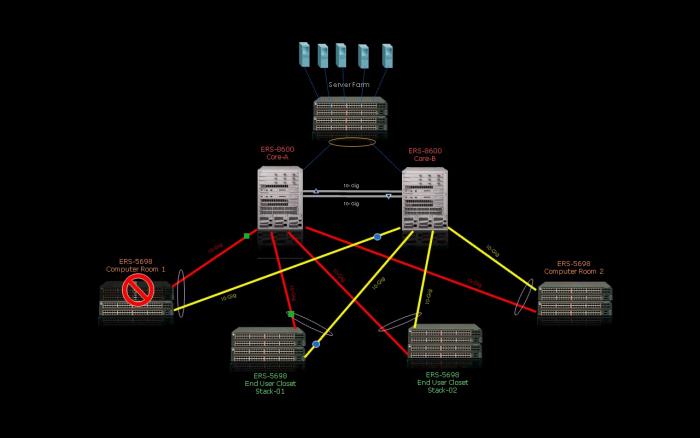Routed-SMLT (R-SMLT) is a computer networking protocol developed at Nortel as an enhancement to split multi-link trunking (SMLT) enabling the exchange of Layer 3 information between peer nodes in a switch cluster for resiliency and simplicity for both L3 and L2.
In many cases, core network convergence time after a failure is dependent on the length of time a routing protocol requires to successfully converge (change or re-route traffic around the fault). Depending on the specific routing protocol, this convergence time can cause network interruptions ranging from seconds to minutes. The R-SMLT protocol works with SMLT and distributed Split Multi-Link Trunking (DSMLT) technologies to provide sub-second failover (normally less than 100 milliseconds) so no outage is noticed by end users. This high speed recovery is required by many critical networks where outages can cause loss of life or very large monetary losses in critical networks.
RSMLT routing topologies providing an active-active router concept to core SMLT networks. The protocol supports networks designed with SMLT or DSMLT triangles, squares, and SMLT or DSMLT full mesh topologies, with routing enabled on the core VLANs. R-SMLT takes care of packet forwarding in core router failures and works with any of the following protocol types: IP Unicast Static Routes, RIP1, RIP2, OSPF, BGP and IPX RIP.
Product support
R-SMLT is supported on Avaya's Ethernet Routing Switch ERS 8600, ERS 8800, VSP9000, ERS 8300 and MERS 8600 products.

